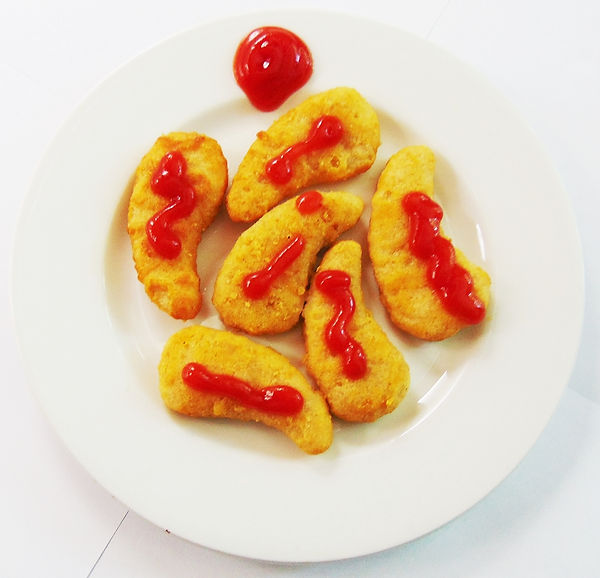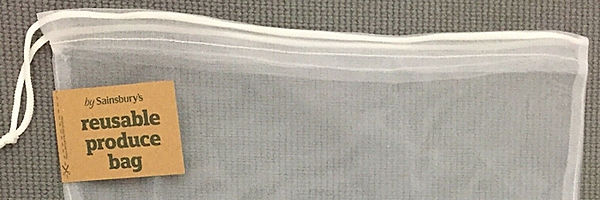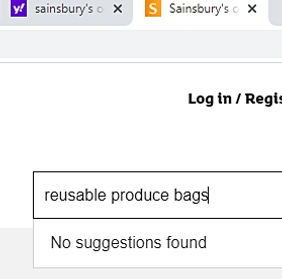
Supermarkets!
Including on-line shopping, spring 2020.
To begin with, I’m pretty much sure that everyone living in the UK will agree, December is a winter month. Since there are 4 seasons per 12 month year – 3 months per season – it somewhat follows that January and February are the remaining two winter months followed by spring.
It was spring 2020, March, to be precise, that the UK felt the effects of Coronavirus. Not just on their lives but their jobs, resulting in a lockdown introduced by the British government.
As it stands, April 21st 2020, only a small handful of retail businesses are open. Of that handful, the one the TRUTH wishes to address is supermarkets. Moreover, those offering an on-line order service, something that has escalated to huge proportions as a result of covid19 and the lockdown causing people to self-isolate
With the initial panic buying over, supermarket stocks in most areas have returned to a semblance of normal, and so ordering non-perishable items on-line is all fine and dandy. What, though, of perishable goods? The humble tomato, fresh fruit and vegetables and, in particular, and moreover, the crunchy carrot, mushrooms and onion?
For my tea, tonight, I will be cooking spaghetti bolognaise. The two main fresh produce items I require are a medium sized onion (also needed for three other meals) and small mushrooms. If I was to order them on-line, the mushrooms, in particular, I could not specify the size I want, just the weight. Hold that thought right there as I mention the carrot, a vegetable of which it is claimed can help you see in the dark
I love carrots. I especially love them raw. I eat a raw carrot, cut lengthways into batons, with soup from mid to late autumn to late spring and cold meat sandwiches the rest of the time. I especially love a carrot grated on salad, either before a pizza meal, a chicken salad or other and as one of 5 vegetables when I cook a roast dinner or have sweet and sour chicken with 2 types of rice.
Here, though, is the problem. The size of the carrots for the various meals. Three different sizes, in fact.
So, you place your order for a half a kilo (just over a pound) of carrots along with other items you order on-line. Only to discover, when you unpack the bag(s), this ‘obscenity’:

That, by the way, is to exact scale on my 19" Samsung monitor with Google chrome set at 100%
7.75 inches or 19 centimetres of carrot. That is, according to Chris Tarrant, 1 inch longer than the average length of the UK male’s phallus, while the obscenity aspect is, plain and simple, it’s indicative and representative of a non-vibrating sex-toy.
What is chiefly plain and clear (synonymous with simple in this context) is that size of carrot, after decades of years, is totally unnecessary. Moreover, it is worth pointing out the fact that, most, sometimes all of the carrots, when they are that size, are the same.
Furthermore, and this I find totally strange, the lesser sized carrots are sold in packs of half or one kilo. Now, to me, that sounds like a bit of a con by the supermarkets involved, Sainsbury’s and Tesco, who I’ve found to be the main culprits; that particular obscenity coming from Tesco.
Although this article brings to light other faults by these two bastions of the supermarket world, there is more on the carrot.
How does such an obscenity come to be? You may well ask. In truth, the answer is plain and simple and has gone on for decades (now at the end of this century’s 2nd decade). Planting and cultivation – that’s picking to you. In order for a carrot to become that obscenely big, it, along with all of the others that size, notably grouped together, if you’ve ever seen a bunch of carrots offered for sale in a shop, has to have been picked late. That comes about from: weather, planting too many carrots at a given time, or supermarket shops not selling the expected amount, thereby causing demand to go down.
NB. You would figure that supermarkets would have worked that out by now, also that, by offering for sale such an obscene size will make the customer either shop elsewhere or buy the packs of normal carrots instead.
The other thing, talking about supermarkets, is, how come the regular, non-obscene sized carrots find their way into half and one kilo bags?
Milk bottle seals!
Although I am a single person, I am quite the economist. Take a 4pint milk bottle as a perfect example. I pour about half of the milk into two water bottles and place one of those and the milk bottle in my freezer while using the other water bottle, now filled with milk, for my daily needs. Up until I recently found myself having to replace my old fridge, when I came to use the contents of the 4 pint milk bottle it meant laying it down on a shelf.
Occasionally, even with the seal in place, milk would drip and leak from the bottle. As you will note from the following photograph of two different, indeed, my recently used 4pint bottles, the pull tabs are in different positions:

The tabs can be found in numerous positions. For pouring purposes, in relation to the handle, the tab on the bottle on the left side of the photo is perfectly positioned and so I avoid buying a bottle where the tab is positioned 180 degrees away.
I find it both a puzzle and baffling as to how the seals come to be in an array of different positions, but there you have it, they do.
Misleading packaging!
Once a fortnight, I have a kebab for lunch. The kebab, itself, comes from Tesco and can be found in their foreign foods freezer.
That particular kebab has chilli sauce seemingly injected into the four pieces of meat.
I’m one of those people that doesn’t like spicy food, and so I find four slices to be too much.
I therefore heat up two with the original pitta bread it came with and put the other two in the freezer.
Originally, I made the mistake of buying the pittas seen in the packaging to the right. In fact, it is the very packaging of the 6 pittas I bought from Sainsbury’s. What is wrong with the packaging in relation to the product is this. It is misleading. When I tried cutting a slit in one side of the pitta, not only was there insufficient room inside (it did not separate as in the photo) but the knife shredded parts of it. Put simply, it was nothing like the image on the packaging.
My preference now, is a 9 inch Tortilla wrap. I heat up the two strips of kebab meat for the revised cooking time of them not being inside the pitta and then warm up the wrap.
See my article: ‘Healthy diet, healthy living’ for more.

If it ain’t broke, then why change it – for the worse!
As well as supermarkets infuriating customers by moving things around their stores, there is the annoying act of changing something, a product, and for the worse.
In this case, it has added environmental implications and effects, at a time when carrier bags, which were once free, now have a Government tax levied on them to cut down plastic waste.
Yeah! As if everyone is going to re-use their carrier bags. Sorry, but, even though I do, it isn't going to happen.
I use one of two shoulder bags to do my shopping, both of which are crammed with plastic bags. Sadly, however, one of Tesco’s and Sainsbury’s own products have seen an unnecessary increase in plastic, plastic that is both unnecessary (sorry for repeating myself) and a hindrance to the use of the product.
I chose the Tesco tomato sauce bottle, as it is the one I buy; theirs being cheaper. I re-use the original bottle top, the one with a clear flowing nozzle, discarding the new bad one, which I put in the bin. The beauty of the old nozzle, what makes it so perfect is, you can direct the sauce exactly where you want it; either as a blob of sauce or trail it over your food (see below). Sadly, with the new nozzle, the hole is covered with a fine plastic webbing. When you squirt the tomato sauce the webbing holds it back; prevents it from flowing freely. It comes out, instead, in a blob. Totally disappointing for those of us who like to trail it evenly over our food; from drawing circles around a beef burger to strips across chips and, if we so like, squirt a blob on the plate.
Please. If you manufacture that type of sauce bottle or any other such bottle that has a nozzle, and you truly care about the environment and unnecessary plastic, STOP using the webbing etc. It is 100% uncalled for!

Just to confirm, here is a plate of 6 Birds Eye chicken dippers. Tomato sauce applied using the original free flowing nozzle:

Are Sainsbury’s reusable produce bags a con?

All things considered, something I will get to, the irrefutable answer is YES!
To save on plastic, in response to the British Government’s 5p and now 10p tax on plastic shopping bags, Sainsbury’s stopped making plastic bags available to customers for produce, replacing them with ‘plastic’ net bags like the cropped one seen above and at a cost of 30p compared with the reusable and free replaceable orange bags, costing just 20p.
Strangely enough, despite it being labelled ‘Sainsbury’s reusable produce bags’, a search for them on Sainsbury’s on-line shopping site shows as: ‘No suggestions found’.

As to the point in question. That little mesh bag, complete with it’s label and bar code, weighs 10% of a kilo (10gms).
Likewise, that adds 10% to a kilo of carrots, or part thereof = 4p and 31p to a kilo of mushrooms or part thereof.
By comparison, the old, somewhat weightless, plastic bags add nothing! ZERO!
Something to watch out for if you use Sainsbury’s ‘weigh, price and label’ machines. Remove any fragments of produce from them; broccoli tips being one, then check that the weight shows’000’ gms. On two occasions, I noticed the empty scales to be plus as much as 12gms. Having reported it to a member of produce staff, while the faulty reading is in breach of the weights and measures act, I was told to mind my own business.
‘Help! I’m being squashed!’
That, by the way, would be the sound of ripe (softish) tomatoes complaining about being squashed as they are displayed at an angle of or above 45 degrees in Sainsbury’s, if they could speak. By contrast, firmer skinned fruits (the tomato being a fruit because it has seeds in it), like lemons and oranges are displayed horizontally.
It goes without saying that, Sainsbury’s are, or have to be, fully aware of it from the amount of soft and squashed tomatoes their stores throw away, and yet, they happily continue to run the risk of throwing away produce, something I’m 100% sure you will agree is total madness.
Footnote: Having published this 26 years update of the original printed TRUTH from and since 1994 to the internet, the TRUTH has contacted, by e-mail, one or more of those named in this article.
Of those, Sainsbury’s e-mail address is invalid.
See the TRUTH’s new article: ‘Contemptuous e-mails’ (how to avoid the paper chase of blame).

Contact us: the.irrefutable.truth2020@gmail.com